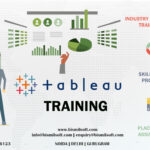Sampai akhirnya, saya menemukan jalan keluar: sebuah Power BI Course. Mari saya ceritakan bagaimana perjalanan ini mengubah segalanya, bukan hanya cara saya bekerja, tapi juga cara saya melihat data.
The Day My Data Nightmare Ended: My Journey Through a Power BI Course
You know that feeling, right? Staring at a spreadsheet so vast it could be a small country, trying to make sense of rows and columns that seem to multiply by themselves. For years, that was my daily reality. I was drowning in data, tasked with finding insights, but armed only with clunky tools and a growing sense of dread. My reports were static, boring, and often outdated by the time I finished them. My boss would ask "Why?" or "What if?" and I’d scramble, digging through numbers again, hoping to stumble upon an answer.
Then, a whisper started circulating in the office, a name that promised to tame the data monster: Power BI. At first, I was skeptical. Another tool? Another steep learning curve? But the more I heard, the more intrigued I became. People were talking about interactive dashboards, real-time insights, and making data "tell a story." This wasn’t just another spreadsheet program; it sounded like a superpower.
Why Power BI? Discovering the Game-Changer
Before I even considered a Power BI course, I did my homework. What is Power BI, really? I learned it’s Microsoft’s business intelligence tool, designed to connect to all sorts of data sources, transform messy data into clean, usable information, and then visualize it in stunning, interactive ways. The idea was to empower anyone – not just data scientists – to understand their data better and make smarter decisions.
This sounded exactly like what I needed. My goal wasn’t to become a data scientist, but to become fluent in data, to understand the narratives hidden within those numbers. I wanted to move from being a data-handler to a data-storyteller.
But where to start? The official documentation looked intimidating, and self-teaching felt like trying to learn to swim by just jumping into the deep end. That’s when I decided a structured Power BI training was my best bet.
Picking the Right Path: My Power BI Course Adventure Begins
The internet is a jungle of choices, and finding the right Power BI course felt like another data problem in itself! There were free tutorials, expensive bootcamps, online academies, and local workshops. My main criteria were simple:
- Beginner-Friendly: I needed something that started from absolute zero, no assumptions about prior knowledge.
- Practical & Hands-On: I learn by doing, so theoretical lectures wouldn’t cut it. I needed exercises, projects, and real-world examples.
- Experienced Instructors: Someone who could explain complex concepts simply and patiently.
After sifting through reviews and course outlines, I finally settled on an online learn Power BI program that promised all of the above. The initial excitement was mixed with a healthy dose of nervousness. Could I really do this?
From Jumbled Mess to Meaningful Insights: What I Learned (and Loved!)
The moment I logged into my first lesson, a sense of calm washed over me. The instructor was fantastic, breaking down intimidating topics into bite-sized, digestible pieces. Here’s a glimpse of what truly transformed my data journey:
1. Getting Started: The Interface That Felt Like Home
The Power BI Desktop interface, at first glance, looked busy. But the course quickly showed me its logic. It’s designed for intuitive drag-and-drop functionality, making it surprisingly easy to navigate. Within the first few hours, I was already connecting to a simple Excel file and dragging fields onto a canvas to create my very first chart. It felt less like coding and more like playing with building blocks.
2. Connecting Data: No More Manual Labor!
This was a game-changer. My course taught me how to connect Power BI to various data sources – not just Excel, but databases, web pages, and even other cloud services. The sheer number of connectors was mind-boggling! The best part? Once connected, Power BI could refresh the data automatically. No more downloading new files every week and copying them over manually. It was like having a tireless assistant.
3. Transforming Data: The Magic of Power Query
Oh, Power Query! This tool inside Power BI was like discovering a secret superpower. My data was often messy: inconsistent spellings, missing values, weird formats. Before, I’d spend hours cleaning it manually. Power Query allowed me to record a series of steps to clean, shape, and transform my data once, and then apply those steps automatically every time new data came in. It was like having a magical data janitor who always knew exactly what to do. My Power BI training dedicated a good chunk of time to this, and it was worth every minute.
4. Modeling Data: Building the Blueprint for Insights
This is where things got a bit more structured, and deeply satisfying. The course explained how to build data models – essentially, showing Power BI how different tables of data relate to each other. For example, how my sales table connected to my customer table. This relationship building is crucial because it allows Power BI to perform complex calculations and give you accurate answers when you ask questions across different datasets. We even dipped our toes into DAX (Data Analysis Expressions), the formula language of Power BI. It felt a bit like learning a new language, but the course broke it down so I could build useful measures like "Total Sales" or "Sales Growth Percentage" with confidence.
5. Visualizing Data: Telling the Story That Matters
This was the fun part! Turning numbers into compelling visuals was incredibly rewarding. My Power BI course taught me about different chart types – bar charts, line charts, pie charts, scatter plots – and when to use each effectively. More importantly, it taught me the principles of dashboard design: how to lay out information so it’s clear, impactful, and easy to understand. Suddenly, those dull spreadsheets were transformed into interactive dashboards where I could click on a region and see all the related sales figures update instantly. It was a lightbulb moment.
6. Sharing Insights: Making an Impact
Finally, the course covered how to publish and share my reports and dashboards securely with colleagues and stakeholders using the Power BI Service. This meant no more emailing static PDFs. Now, everyone could interact with the data, filter it to their needs, and get answers to their own questions, all from their web browser or mobile device. This level of collaboration and self-service analytics was revolutionary for my team.
Beyond the Classroom: Real-World Impact and Career Boost
Finishing the Power BI course wasn’t the end; it was just the beginning. The skills I gained immediately translated into real-world value.
- Faster, Smarter Reporting: My weekly and monthly reports, once a painful chore, became a quick refresh. I could now spend more time analyzing the data rather than just preparing it.
- Deeper Insights: I started seeing patterns and trends I’d never noticed before. I could answer complex "why" questions with confidence, backing my statements with clear, interactive data visualizations.
- Increased Confidence: No longer afraid of data, I actively sought out data-related problems to solve. I felt empowered, capable of tackling any data challenge thrown my way.
- Career Growth: My new skills didn’t go unnoticed. I became the go-to person for data questions, and my contributions to strategic discussions became much more impactful. It opened doors to new opportunities I hadn’t even considered.
Is a Power BI Course Right for You? My Honest Advice
If you’re reading this and nodding along to my struggles, then yes, a Power BI course is probably exactly what you need. It’s not just for data analysts; it’s for anyone who deals with data in their job: marketing professionals, sales managers, finance teams, HR specialists, small business owners – you name it.
Here’s what to expect and how to make the most of it:
- It takes effort: Like learning any new skill, it requires dedication and practice. Don’t expect to be a master overnight.
- Start with the basics: Don’t try to tackle everything at once. A good course will guide you step-by-step.
- Practice, practice, practice: The more you work with real (or even sample) data, the faster you’ll learn. Try to apply what you learn to your own work challenges.
- Don’t be afraid to make mistakes: That’s how we learn! Power BI has a great community, so help is usually just a quick search away.
- Focus on the "why": Always ask yourself what story the data is telling and why it matters to your audience.
Learning Power BI wasn’t just about mastering a software; it was about changing my mindset towards data. It transformed me from someone intimidated by numbers into someone who could harness their power. If you’re ready to stop drowning in data and start driving insights, I wholeheartedly recommend embarking on your own Power BI course journey. It might just be the most impactful skill you learn this year.
Are you ready to turn your data chaos into clarity? Your journey begins now.



